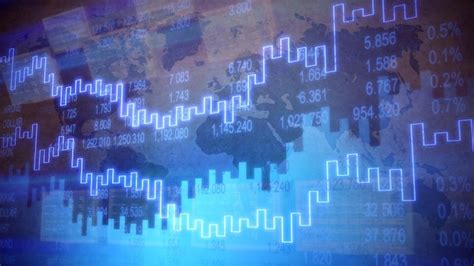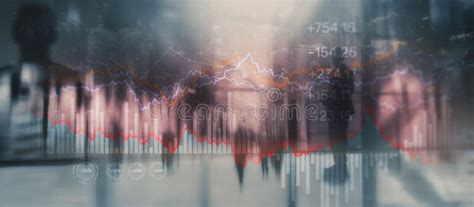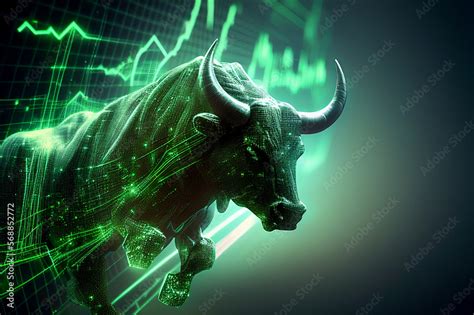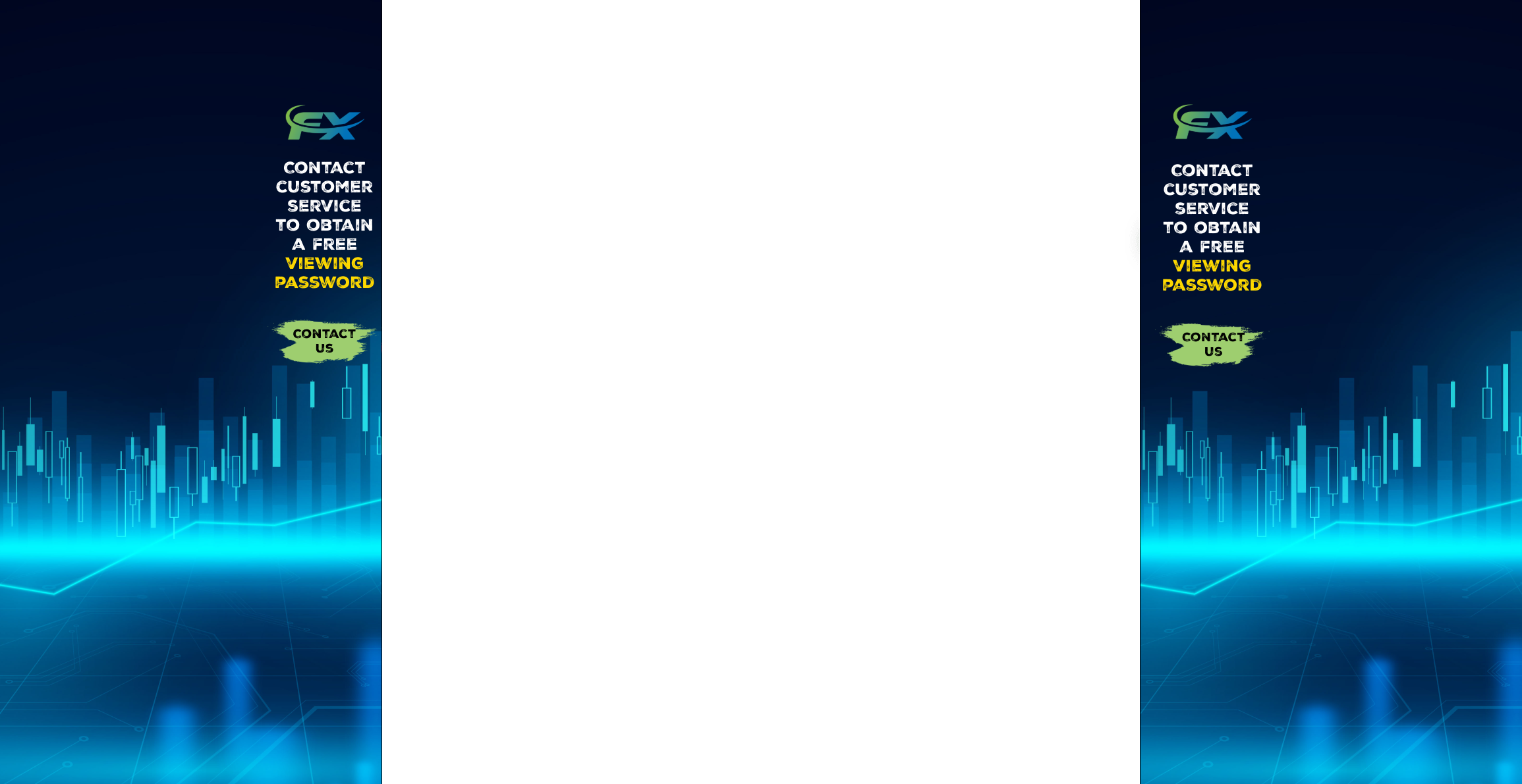The forex market is one of the largest and most dynamic financial markets in the world, offering opportunities for individuals and institutions to exchange currencies and profit from fluctuations in exchange rates. Understanding how to trade the forex market requires more than just basic knowledge—it involves mastering the intricacies of currency pairs, economic indicators, and trading strategies. Whether you're a novice or an experienced trader, a deeper insight into the factors that drive currency movements and the tools available to navigate this vast market is essential for success.
Basics of the Forex Market
The forex market operates as a global platform where currencies are exchanged and traded 24 hours a day, five days a week. Understanding its structure and how various elements interact within the market is essential for anyone looking to get involved.
What is the Forex Market and How Does It Work?
The forex market is a decentralized marketplace for buying and selling currencies globally.
It operates through electronic trading platforms, enabling traders to exchange USD, EUR, JPY, and other currencies.
Transactions occur in pairs, where one currency is exchanged for another, e.g., EUR/USD or GBP/JPY.
The value of currencies fluctuates due to factors such as interest rates, inflation, and geopolitical events.
Liquidity in the forex market is one of its most appealing features, with billions of dollars traded daily.
The forex market allows individuals, banks, and institutions to exchange currencies at any time during its operational hours. Its decentralization means that it does not have a centralized exchange like the stock market, but instead operates through a network of brokers, banks, and other entities. Understanding how different currencies interact in pairs is fundamental, as it determines how a trader profits or incurs losses.
Understanding Currency Pairs and Exchange Rates
<1> Currency Pairs
The forex market works with currency pairs such as EUR/USD, GBP/USD, AUD/USD, where the first currency is the base currency, and the second is the quote currency.
<2> Exchange RatesThe exchange rate represents the value of one currency in terms of another. For example, if the EUR/USD exchange rate is 1.20, 1 EUR is worth 1.20 USD.
<3> Types of Currency PairsMajor Pairs: Pairs that involve the USD, such as EUR/USD, USD/JPY, and GBP/USD.
Minor Pairs: Pairs that do not involve the USD, such as EUR/GBP or AUD/JPY.
<4> How Exchange Rates Are DeterminedExchange rates are influenced by supply and demand, economic indicators like interest rates, inflation, and GDP growth.
The Role of Central Banks in Forex Markets
Central banks, such as the Federal Reserve (United States), European Central Bank (Eurozone), and Bank of Japan, play a pivotal role in shaping the forex market. Their policies, particularly concerning interest rates and monetary stimulus programs, can significantly impact currency values.
Central banks influence the forex market through their control over a country's money supply and interest rates. When the Federal Reserve raises or lowers interest rates, it directly impacts the value of the USD, influencing global currency pairs. For example, higher interest rates generally make a currency more attractive to foreign investors, boosting its value.
The Forex Trading Hours: When to Trade and Why It Matters
The forex market operates 24 hours a day, five days a week, starting from Sunday evening and closing on Friday evening (GMT).
Trading hours are divided into four major sessions:
Asian Session: Active during the Tokyo market hours.
European Session: Overlaps with the Asian session, with high volatility.
U.S. Session: Begins with the opening of the New York market, often the most active session.
Overlapping Hours: The periods where the European and U.S. sessions overlap tend to have the highest trading volume and volatility.
Understanding when to trade helps in capitalizing on market movements and avoids times of low liquidity, such as the weekend gap.
Key Factors Affecting the Forex Market
Understanding the forces that shape the forex market is crucial for traders. Economic indicators, interest rates, political events, and inflation rates are just a few of the factors that directly influence currency values. These elements create volatility, shaping opportunities and risks for those involved in currency trading.
How Economic Indicators Influence Forex Prices
<1> Economic Reports
GDP Growth: A growing economy strengthens the national currency, making it more attractive.
Unemployment Rate: Higher unemployment often signals economic weakness, leading to a devaluation of the local currency.
Consumer Price Index (CPI): CPI measures inflation, influencing the central bank's decision on interest rates.
Trade Balance: A country's trade deficit or surplus impacts its currency's strength.
<2> Real-Time Economic NewsNews reports from Bloomberg and Reuters often affect currency movements, causing quick fluctuations in the forex market.
<3> Market Reactions to DataForex traders respond to economic data, such as inflation and interest rate changes, which directly affect the USD, GBP, EUR, and other major currencies.
Economic indicators such as GDP growth, unemployment rates, and inflation provide traders with a clearer picture of a country's economic health, helping them predict future currency movements.
The Impact of Interest Rate Decisions by Central Banks
Interest rate decisions made by central banks, such as the Federal Reserve and the European Central Bank, significantly impact currency values. When interest rates are increased, investors seek higher returns, boosting demand for that currency.
<1> Higher Rates = Stronger Currency
When the Federal Reserve raises interest rates, the USD strengthens, attracting foreign investment.
<2> Lower Rates = Weaker CurrencyConversely, when interest rates are lowered, currencies like the GBP or EUR tend to weaken, affecting their exchange rates globally.
<3> Central Bank AnnouncementsPress releases and statements from central banks often trigger market reactions as traders anticipate future actions and adjust their positions.
Political Events and Their Effect on the Forex Market
Political uncertainty can create significant volatility in the forex market, affecting currency stability. Events such as elections, political turmoil, and trade negotiations often prompt drastic currency value fluctuations.
Political events can lead to significant market movements. For instance, the Brexit referendum in 2016 caused the GBP to lose considerable value due to uncertainty surrounding the UK's future relationship with the European Union. Similarly, tensions in Hong Kong can cause fluctuations in the HKD, as political instability raises concerns for investors.
Inflation Rates and Currency Value Fluctuations
<1> Inflation and Currency Devaluation
High inflation reduces purchasing power and erodes the value of the local currency, affecting its global exchange rate.
<2> Inflation in the EurozoneInflationary pressures in the Eurozone can affect the EUR value against the USD, GBP, and other currencies.
<3> Central Bank ResponsesTo curb inflation, central banks, such as the Bank of Japan or the Swiss National Bank, may adjust monetary policies, further influencing currency values.
Inflation plays a key role in determining the strength of a currency. Countries with high inflation often experience a devaluation of their currency as the cost of goods rises, leading to reduced international demand.
The Role of Geopolitical Tensions in Forex Volatility
Geopolitical tensions can result in significant forex volatility, especially when countries engage in trade wars, military conflicts, or major diplomatic crises.
<1> Impact of Trade Wars
Trade disputes, such as the US-China trade war, often result in currency fluctuations, with investors seeking safe havens like the USD or CHF.
<2> Terrorism and ConflictsTerrorist attacks or military conflicts lead to global risk aversion, which can weaken currencies like the JPY or GBP.
<3> Impact on Emerging Market CurrenciesEmerging market currencies like the CNY or TRY are particularly vulnerable to geopolitical risk, often leading to rapid depreciation.
Geopolitical risks have an immediate effect on forex markets. Conflicts and uncertainty drive volatility, causing currencies of countries involved in these tensions to fluctuate as investors react to risk factors.
By understanding the impact of these economic and geopolitical forces, traders can develop more effective strategies, manage risk, and take advantage of shifts in currency prices. Economic indicators, interest rates, political events, and inflation all play interconnected roles in shaping the dynamics of the forex market. Recognizing their influence prepares traders for the uncertainties that can arise within the market.

Forex Trading Platforms and Tools
In the fast-paced world of forex trading, the right tools and platforms are essential for success.
Choosing the Right Forex Trading Platform for Your Needs
<1> Platform Accessibility
Ease of Use: A user-friendly interface is crucial for new and experienced traders alike.
Mobile Compatibility: Look for platforms that offer mobile apps, enabling trading on the go.
Available Features: Consider platforms with features like real-time data, news feeds, and charting tools.
<2> Costs and FeesSpreads: The difference between the bid and ask price varies by platform.
Commission Charges: Some platforms charge fixed commissions, while others use a spread-based fee structure.
<3> Security and ReliabilityChoose platforms that offer SSL encryption, two-factor authentication, and have a strong reputation for uptime.
Selecting the right forex trading platform depends on a balance of functionality, cost, and security. Popular platforms like MetaTrader 4/5, NinjaTrader, and cTrader all offer varying features suited for different types of traders.
Essential Tools for Forex Market Analysis
Forex traders rely on a range of tools to analyze the market and make informed decisions.
<1> Technical Analysis Tools
Indicators: Moving averages, RSI, MACD, and Bollinger Bands help traders identify trends.
Chart Patterns: Tools like candlestick charts or line charts help visualize price movements.
<2> Fundamental Analysis ToolsEconomic Calendars: Stay informed about economic data releases, such as GDP or CPI.
News Feeds: Services like Bloomberg and Reuters provide real-time market-moving news.
<3> Sentiment AnalysisSocial Media Monitoring: Platforms like Twitter can indicate market sentiment based on public opinion and financial news.
A well-rounded trader uses a combination of technical, fundamental, and sentiment analysis to gauge market conditions. Some platforms, like TradingView, combine multiple tools in one integrated solution.
Understanding Spot and Forward Markets
The spot market and forward market are two different ways to trade currencies in the forex market, each with distinct characteristics.
In the spot market, currencies are bought and sold for immediate delivery, with transactions settled "on the spot" (usually within two business days). This market offers high liquidity and is used for short-term trading. The spot price is influenced by immediate market conditions such as geopolitical news or economic reports.
On the other hand, the forward market allows traders to agree on a future exchange rate for a currency pair, with settlement occurring at a specified date in the future. It is used to hedge against exchange rate risk or speculate on future price movements. While the forward market doesn’t involve an exchange and is over-the-counter (OTC), it offers flexibility in terms of contract sizes and maturity dates.
| Feature | Spot Market | Forward Market |
|---|---|---|
| Settlement Time | 2 business days | Future agreed date (customizable) |
| Risk | Influenced by short-term news | Hedging tool for long-term risk |
| Liquidity | High | Medium to low |
| Market Type | Exchange-based | Over-the-counter (OTC) |
How to Use Forex Trading Software Effectively
To maximize profitability, traders need to learn how to use forex trading software effectively. Key steps include:
<1> Master the Interface
Familiarize yourself with the dashboard, charts, and order-entry features.
<2> Set Up Alerts and NotificationsCustomize price alerts and news notifications to stay updated on market movements.
<3> Backtest Trading StrategiesUse demo accounts to backtest strategies without risking real capital.
The right software, like MetaTrader or NinjaTrader, offers extensive support for order management, backtesting, and automation. By mastering these tools, traders can make more informed and strategic decisions.
Automated Trading Systems in Forex
Automated trading systems (ATS) use algorithms and predefined rules to execute trades without human intervention.
<1> How Automated Trading Works
ATS use complex algorithms to buy and sell currency pairs based on predefined technical indicators or economic news triggers.
<2> Advantages of AutomationSpeed: Automated systems can execute trades faster than human traders.
Emotion-Free Trading: Remove emotional bias by relying on pre-set trading conditions.
<3> Challenges with AutomationOverfitting: Trading strategies may fail in live markets due to over-optimization.
System Failures: Technical issues can prevent the system from executing trades correctly.
Automated trading is best suited for traders who want to execute strategies at scale. However, traders must maintain constant monitoring to avoid the potential for system malfunctions.
The Pros and Cons of Trading on the Interbank Market
The interbank market refers to the global network where major financial institutions, such as banks and central banks, trade currencies directly with each other. It offers a high level of liquidity and tight spreads but comes with both advantages and disadvantages for retail traders.
Pros:
Low Spreads: Major currencies like the USD and EUR typically experience tighter spreads in the interbank market.
High Liquidity: The ability to execute large trades without causing significant market impact.
24-Hour Availability: The interbank market operates 24 hours a day, providing flexibility for global traders.
Cons:
Access Limitations: Retail traders generally cannot access the interbank market directly.
Complexity: Trading in this market requires a high level of expertise, often making it unsuitable for beginners.
To participate, retail traders use forex brokers, who act as intermediaries, providing access to the interbank market through electronic trading platforms.
By understanding the right tools, platforms, and trading markets, forex traders can improve their decision-making and maximize their trading opportunities. Whether using the spot or forward markets, implementing automated trading, or choosing the best trading platform, these tools are essential for success in the forex market.

Analyzing the Forex Market
Successful forex trading relies on a solid understanding of market analysis.
Fundamental vs. Technical Analysis in Forex Trading
<1> What is Fundamental Analysis?
Focuses on economic indicators like interest rates, GDP growth, and inflation rates.
Uses news reports from sources like Reuters or Bloomberg to assess currency value.
Evaluates how central banks such as the Federal Reserve or the European Central Bank influence currency value.
<2> What is Technical Analysis?
Relies on historical price data and chart patterns to forecast future price movements.
Uses tools like moving averages, RSI, and Bollinger Bands to identify trends.
Focuses on market psychology, interpreting patterns that indicate buy or sell signals.
<3> Combining Both Analyses
Traders who blend fundamental and technical analysis have a more comprehensive approach.
Fundamental analysis provides insights into the broader economic landscape, while technical analysis helps in precise entry and exit points.
For example, a trader might use technical analysis to time entry after analyzing economic reports from sources like the Wall Street Journal.
Using both methods together can help traders avoid relying on a single viewpoint, thereby increasing their chances of making profitable trades.
Using Economic Indicators for Technical Analysis
Economic indicators play a pivotal role in technical analysis. These indicators provide data that can influence currency values, making them invaluable for forex traders.
<1> Key Economic Indicators
Inflation Rate: A rising inflation rate generally leads to currency depreciation, while low inflation often strengthens a currency.
Interest Rates: Changes by central banks like the Bank of Japan or the Bank of England can create major shifts in exchange rates.
GDP Growth: A strong economy often strengthens the currency, whereas slow or negative GDP growth might signal weakness.
Unemployment Rate: A rising unemployment rate can signal economic instability and weakens the currency.
<2> Using Indicators in Charts
Traders often integrate these indicators into charts to predict price action. For example, a CPI (Consumer Price Index) release may prompt a sharp movement in currency pairs.
Bollinger Bands can help traders gauge volatility following a significant economic report like GDP growth or unemployment data.
Economic indicators serve as the backdrop for many technical patterns. Traders need to recognize how these economic data points affect the market sentiment and adjust their strategies accordingly.
How to Read and Interpret Forex Charts
Reading and interpreting forex charts is a crucial skill for traders. Charts provide visual representations of currency pair price movements over time, enabling traders to identify trends, reversals, and key support or resistance levels.
<1> Types of Forex Charts
Line Chart: Simplest form, showing only the closing prices of a currency pair over a given period.
Bar Chart: Displays opening, closing, high, and low prices for each time period. Useful for determining volatility.
Candlestick Chart: Shows the same data as bar charts but in a more visually intuitive format. Each candle represents a set time period, with a body showing opening and closing prices, and wicks showing highs and lows.
<2> Key Chart Patterns
Head and Shoulders: A reversal pattern signaling the end of a trend.
Double Top and Double Bottom: Indicates potential price reversal after a sustained trend.
Triangles: Can signify continuation patterns, depending on the breakout direction.
<3> Identifying Support and Resistance Levels
Support: The price level at which a currency pair tends to stop falling, and buying pressure emerges.
Resistance: The price level at which a currency pair tends to stop rising, and selling pressure emerges.
These levels can be spotted on charts by looking at previous price highs and lows. Traders use them to predict potential price reversals.
| Chart Type | Best Use | Key Strengths |
|---|---|---|
| Line Chart | Long-term trend analysis | Easy to read, minimal information overload |
| Bar Chart | Intraday price movements, volatility analysis | Shows detailed price data (open, close, high, low) |
| Candlestick Chart | Short-term price action, trend reversals | Most visually intuitive for trend and reversal identification |
Interpreting forex charts is an ongoing learning process. As you gain experience, you’ll become more proficient at identifying patterns and making accurate forecasts based on past price movements.
In summary, combining fundamental and technical analysis allows traders to understand both the broader economic environment and specific price trends. Utilizing economic indicators for technical analysis, and mastering how to read and interpret forex charts, equips traders with the tools to make informed, strategic decisions in the forex market.

Advanced Forex Trading Strategies
In the world of forex trading, moving from basic knowledge to advanced strategies is crucial for long-term success.
Day Trading vs. Swing Trading in Forex
Understanding the differences between day trading and swing trading is essential for choosing the right approach based on your trading style and risk tolerance.
<1> Day Trading
Timeframe: Positions are held within the same trading day.
Objective: Profit from small price fluctuations in a short time.
Trading Style: Requires intense focus and quick decision-making.
Ideal Market: Best suited for high liquidity pairs like EUR/USD, GBP/USD during active trading hours.
<2> Swing Trading
Timeframe: Positions are held from several days to weeks.
Objective: Capture larger price movements by identifying trends.
Trading Style: Less time-intensive than day trading, but still requires constant monitoring.
Ideal Market: Works well with trending pairs and major economic announcements like interest rate changes from central banks such as the Federal Reserve or European Central Bank.
<3> Key Differences
Risk Management: Day trading requires strict stop-losses due to higher frequency of trades. Swing traders often have more flexibility with wider stop-losses.
Time Commitment: Day trading demands more time, while swing trading offers more flexibility for those with less time to monitor markets throughout the day.
Both strategies require knowledge of technical analysis and market sentiment but cater to different types of traders depending on the time and commitment they can dedicate.
Risk Management and Position Sizing
Risk management is crucial for the longevity of any trader in the forex market. By controlling risks, traders can protect their capital and make sustainable profits.
<1> Key Risk Management Strategies
Risk-to-Reward Ratio: Ensure each trade offers a higher reward than the risk. A common ratio is 1:2 (risking 1% to potentially gain 2%).
Stop-Loss Orders: Set predetermined levels to automatically close a position if the market moves against you.
Trailing Stop: Lock in profits by adjusting the stop-loss level as the market moves in your favor.
<2> Position Sizing
Calculation: Position size should be based on a fixed percentage of your total trading capital. For example, risk 2% of your capital on each trade.
Lot Size: Depending on your account balance and risk tolerance, decide between micro, mini, or standard lots.
Leverage Impact: Using high leverage can amplify both profits and losses. Ensure your position sizing aligns with your risk tolerance.
<3> Key Risk Management Tools
Forex Position Calculator: Use tools like a forex position size calculator to ensure you're risking only the amount you're comfortable with.
Economic Calendar: Keep an eye on important economic events like interest rate decisions and GDP releases from central banks like the Bank of Japan or Bank of Canada, which can impact market volatility.
A well-developed risk management plan is essential for maintaining consistency in your trading results.
The Role of Leverage in Forex Trading
Leverage is a powerful tool in forex trading that allows traders to control larger positions with a smaller amount of capital. However, it comes with both opportunities and risks.
<1> What is Leverage?
Definition: Leverage allows you to control a larger position size than your account balance would normally permit. For example, with 50:1 leverage, you can control a position worth $50,000 with just $1,000 of your own capital.
Leverage Ratios: Forex brokers offer various leverage options like 30:1, 50:1, or even 100:1 depending on the regulations of the country or region.
<2> Pros of Leverage
Higher Profit Potential: Leverage allows you to profit from smaller market movements.
More Trading Opportunities: Smaller capital requirements enable you to diversify your trades across multiple currency pairs.
Efficient Use of Capital: Leverage lets you control larger positions while maintaining a smaller margin in your account.
<3> Cons of Leverage
Increased Risk: While leverage magnifies profits, it also amplifies losses. A 5% loss in a 50:1 leveraged position could wipe out your entire account balance.
Margin Calls: If your position moves too far against you, you may be required to deposit more funds to maintain your position.
<4> Leverage and Risk Management
Always use leverage cautiously and adjust your position sizes accordingly. For traders in the Eurozone, USD/JPY, or GBP/USD pairs, a high leverage ratio can be appealing but should be used in conjunction with strict risk management rules.
Leverage should be considered as a tool that can enhance profits but also increase the potential for losses, so it must be used with caution.
Developing a Forex Trading Plan
A well-structured trading plan is the foundation of successful trading. It defines your goals, risk management rules, and trading strategies, providing direction and consistency in your trading.
<1> Components of a Forex Trading Plan
Trading Goals: Set both short-term and long-term objectives. For instance, a monthly goal could be to achieve a 10% return on your capital.
Market Selection: Decide which currency pairs to trade, such as USD/JPY or EUR/USD, based on your strategy and risk tolerance.
Trading Strategy: Clearly outline your approach, whether it's day trading, swing trading, or using technical analysis indicators like moving averages or RSI.
<2> Risk Management Plan
Include specific guidelines for determining position sizes and stop-loss levels, as well as the maximum percentage of your capital you're willing to risk on each trade.
Specify the maximum drawdown you're willing to accept before reevaluating your strategy.
<3> Trade Evaluation and Review
Set aside time at the end of each week or month to review your trades and performance.
Keep a trading journal to document what worked, what didn’t, and why. This will help you improve your trading plan over time.
| Element of Plan | Details | Importance |
|---|---|---|
| Trading Goals | Set clear and achievable profit targets, e.g., monthly profit goals. | Provides focus and direction. |
| Market Selection | Choose currency pairs like GBP/USD based on trading hours and liquidity. | Ensures market suitability for your trading style. |
| Risk Management | Define risk limits, e.g., 2% per trade. | Protects your capital from large losses. |
| Strategy | Choose between swing trading or day trading based on time commitment. | Aligns with your lifestyle and risk tolerance. |
A solid trading plan takes the guesswork out of trading, ensuring you stay disciplined, manage risks, and stay aligned with your long-term goals.
In summary, advanced forex trading strategies such as day trading and swing trading, combined with effective risk management and leverage use, provide traders with the tools to approach the forex market in a strategic, disciplined manner. Developing a comprehensive trading plan further ensures that traders can stay consistent and profitable over time.

Understanding Forex Trading Psychology
Successful forex trading requires more than just technical knowledge and strategy; it's about managing your mindset.
The Importance of Discipline in Forex Trading
Discipline is the cornerstone of successful trading. Without it, traders are prone to making impulsive decisions, ignoring their strategies, and risking excessive amounts.
<1> What is Discipline in Trading?
Adhering to your strategy: Sticking to your trading plan, even during periods of high volatility.
Avoiding impulsive trades: Making decisions based on data, not emotions.
Consistent risk management: Always using stop-losses and adjusting position sizes to your risk tolerance.
<2> Why Discipline Matters
Emotional Control: Helps you manage feelings of fear and greed.
Long-term success: Focused, consistent approaches lead to steady profitability.
Reduces emotional bias: Disciplined traders don't let recent losses affect future trades.
<3> How to Build Discipline
Set clear, realistic goals for each trade.
Track your performance regularly to identify areas of improvement.
Follow your trading rules regardless of the market conditions, and don’t deviate without valid reasons.
In the highly competitive and fast-paced environment of forex, discipline provides the foundation for controlled and profitable trading.
How to Handle Losses and Stay Motivated
Losses are inevitable in trading. How you respond to them can determine your success or failure in the long run.
<1> Accepting Losses
Understand that losses are part of the trading process. Every trader, including professionals, experiences them.
Use each loss as a learning opportunity to improve your strategy.
Keep a trading journal to analyze what went wrong and how to avoid similar mistakes.
<2> Staying Motivated After Losses
Reflect on past wins to remind yourself of your capabilities.
Set small, achievable goals to build momentum after a loss.
Avoid revenge trading: Don’t trade just to recoup losses, as this can lead to emotional decisions.
<3> Maintaining Mental Resilience
Take regular breaks to clear your mind and avoid burnout.
Practice mindfulness techniques to stay calm and focused.
Seek support from a community of traders to share experiences and tips.
By focusing on long-term growth, you can minimize the emotional toll of losses and maintain the drive to continue improving.
Overcoming Emotional Biases in Forex
Emotions such as fear, greed, and overconfidence can distort decision-making and lead to poor trading results. Recognizing and overcoming these biases is key to becoming a successful trader.
<1> Common Emotional Biases
Loss Aversion: The fear of loss leads to hesitating or closing positions too early.
Overconfidence: Believing you're "right" too often, leading to excessive risk-taking.
Recency Bias: Giving too much weight to recent events, such as a short-term market trend or recent loss.
<2> Strategies to Overcome Emotional Biases
Set rules for entering and exiting trades, regardless of emotions.
Use automation: Program trades with stop-loss and take-profit levels to remove emotional influence.
Practice mindfulness: Regular meditation can help you stay calm and grounded.
<3> Benefits of Overcoming Emotional Biases
Better decision-making based on data and analysis rather than feelings.
Enhanced ability to follow your trading plan consistently.
Improved mental clarity, which can reduce impulsive or irrational actions.
Mastering your emotions allows you to make rational, calculated decisions based on the market, rather than emotional impulses.
Developing Patience for Long-Term Forex Success
Patience is an often overlooked but essential trait for success in the forex market. Traders who rush can miss opportunities or make hasty decisions that cost them.
<1> Why Patience is Key
Waiting for high-probability setups: Patience allows you to wait for optimal entry points based on technical indicators or economic news, such as a rate decision from the Federal Reserve.
Avoiding overtrading: Traders who are impatient often make excessive trades, increasing their exposure to risk.
Building long-term wealth: Successful traders know that consistent profits over time outweigh short-term gains.
<2> How to Develop Patience
Focus on quality, not quantity: Wait for trades that align perfectly with your strategy.
Set realistic expectations: Understand that the forex market can take time to produce significant results.
Practice with a demo account: Use it to refine your strategy and test your patience under simulated conditions.
<3> Benefits of Patience in Forex Trading
Increased probability of success by trading only when conditions are ideal.
Lower stress levels, as you are not rushed to take trades.
Greater control over emotions, which reduces the likelihood of making rash decisions.
Patience enables you to stay on course, focusing on long-term profitability rather than short-term rewards.
The Psychology of Leverage and Risk Tolerance
Leverage can enhance both profits and losses, making it a psychological challenge for many traders. Understanding your risk tolerance and how leverage affects your decisions is crucial.
<1> Understanding Leverage
Leverage allows traders to control a larger position with a smaller amount of capital, such as 50:1 leverage.
It amplifies both potential gains and losses, making emotional control critical.
High leverage increases the chance of margin calls if the market moves unfavorably.
<2> Risk Tolerance and Leverage
Know your limits: Identify how much risk you are willing to take on a single trade.
Leverage should be aligned with your risk tolerance: High leverage requires strict risk management strategies to prevent large losses.
Diversification: Avoid concentrating risk on a single trade by spreading it across multiple currency pairs like EUR/USD and GBP/JPY.
<3> Psychological Effects of High Leverage
Stress and anxiety: High leverage increases exposure to risk, leading to emotional stress.
Overtrading: Traders might be tempted to use leverage more often, increasing their risk without proper analysis.
Confidence vs. Overconfidence: Leverage can give the illusion of easy profits, leading to overconfidence.
| Leverage Ratio | Impact on Risk | Suitable for | Precautions |
|---|---|---|---|
| 10:1 | Lower risk, manageable with proper position sizing | Beginners or cautious traders | Use small position sizes to limit exposure |
| 50:1 | Increased risk, amplifies both profits and losses | Experienced traders | Apply strict stop-loss and diversify positions |
| 100:1 | Very high risk, potential for large gains/losses | Advanced traders | Regularly monitor trades and use automated stop-loss orders |
Understanding the psychology of leverage and knowing your risk tolerance can help you manage your trades more effectively and avoid the temptation to over-leverage, which leads to catastrophic losses.
In summary, understanding forex trading psychology is essential for managing both your emotions and your trading strategies. Whether it’s maintaining discipline, handling losses, overcoming emotional biases, or understanding the psychological effects of leverage, mastering the mental side of trading is critical for achieving long-term success.

Conclusion
Trading in the forex market offers an exciting opportunity to engage with one of the world’s most liquid and fast-paced financial markets. By understanding the fundamental principles behind currency pairs, market indicators, and the key players like central banks and trading platforms, you can develop the skills needed to navigate the complexities of forex trading. The successful trader must balance technical analysis with a strong grasp of economic data, always adapting strategies based on market conditions. Mastering forex trading strategies and maintaining a disciplined mindset are crucial to achieving consistent success. As you continue to explore and refine your approach, the forex market will present both challenges and rewarding opportunities.
The forex market is a global marketplace for buying and selling currencies. It operates 24 hours a day, five days a week, and is the largest financial market by volume, with trillions of dollars traded daily.
In forex trading, currencies are quoted in pairs, such as EUR/USD or GBP/JPY. The first currency (e.g., EUR) is the base currency, and the second (e.g., USD) is the quote currency. The price shows how much of the quote currency is needed to buy one unit of the base currency.
Example: EUR/USD at 1.2000 means 1 EUR equals 1.20 USD.
The value of the currency pair fluctuates based on economic indicators, central bank policies, and global events.
Several factors drive the forex market, including:
- Interest rates set by central banks like the Federal Reserve or European Central Bank.
- Inflation data affecting currency values.
- Political events such as elections or government policies.
These factors create fluctuations in currency volatility and affect the strength of currencies.
When selecting a forex trading platform, consider:
- User-friendly interface and support for technical analysis tools.
- Availability of automated trading options and real-time market data.
- Reputation and regulatory status of the platform.
A good platform will provide you with all the tools necessary to trade efficiently and manage risks.
Central banks play a crucial role in shaping the forex market through their monetary policies. By adjusting interest rates, controlling money supply, and intervening in currency markets, they directly influence currency value fluctuations.
- Federal Reserve policies impact the USD.
- The European Central Bank has a significant influence on the EUR.
Economic data such as GDP, unemployment rates, and consumer price indexes provide insights into a country's financial health. Traders use this data to predict future currency movements. For example, a higher-than-expected GDP growth may strengthen a currency, while rising unemployment could weaken it.
Leverage in forex trading allows traders to control larger positions than their actual capital. For example, using a 50:1 leverage ratio means you can control $50,000 worth of a currency pair with just $1,000 of your own funds. However, while leverage can amplify profits, it also increases potential losses.
The spot market is where currencies are bought and sold for immediate delivery at the current exchange rate.
The forward market, on the other hand, involves agreements to exchange currencies at a future date and at a predetermined rate.
- Spot market: Immediate settlement (usually within two business days).
- Forward market: Settlement at a later date.
Yes, political events can cause significant volatility in the forex market. Elections, trade wars, and geopolitical tensions often lead to uncertainty, causing fluctuations in currency prices.
- Trade wars between countries can impact the USD and CNY.
- Elections in the UK can cause volatility in the GBP.







